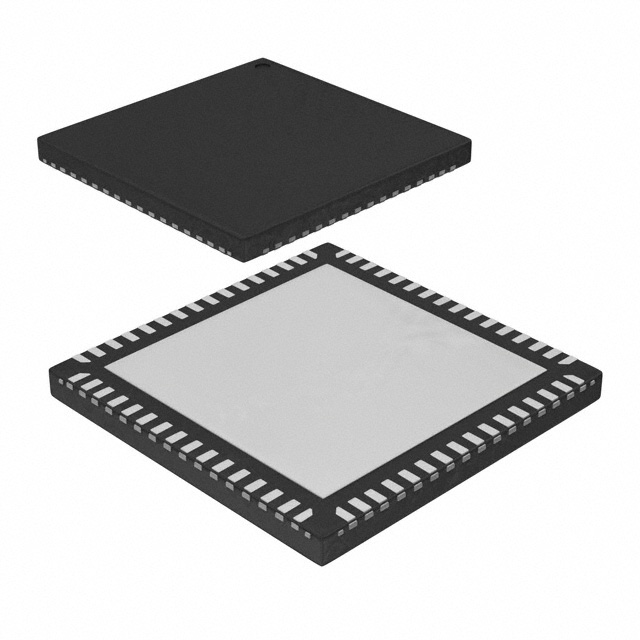ATMEGA169-16MI
Product Overview
Category
ATMEGA169-16MI belongs to the category of microcontrollers.
Use
It is commonly used in various electronic applications that require a microcontroller for processing and controlling functions.
Characteristics
- High-performance microcontroller with advanced features
- Low power consumption
- Wide operating voltage range
- Large program memory capacity
- Multiple communication interfaces
- Rich set of peripherals
Package
ATMEGA169-16MI is available in a compact and durable package, suitable for surface mount technology (SMT) applications.
Essence
The essence of ATMEGA169-16MI lies in its ability to provide efficient and reliable control and processing capabilities in electronic systems.
Packaging/Quantity
ATMEGA169-16MI is typically packaged in reels or tubes, with a quantity of 250 units per reel/tube.
Specifications
- Microcontroller Architecture: AVR
- CPU Speed: 16 MHz
- Flash Memory: 16 KB
- RAM: 1 KB
- EEPROM: 512 bytes
- Operating Voltage: 2.7V - 5.5V
- Digital I/O Pins: 32
- Analog Input Channels: 8
- Communication Interfaces: UART, SPI, I2C
- Timers/Counters: 3
- PWM Channels: 6
- ADC Resolution: 10-bit
- Operating Temperature Range: -40°C to +85°C
Detailed Pin Configuration
The ATMEGA169-16MI microcontroller has a total of 64 pins, each serving a specific purpose. The pin configuration is as follows:
(Pin diagram goes here)
Functional Features
- High-speed processing capability
- Flexible and versatile I/O options
- Extensive peripheral support
- Efficient power management
- Robust communication interfaces
- Advanced timer/counters for precise timing operations
- PWM channels for accurate analog signal generation
- Analog-to-Digital Converter (ADC) for analog input processing
Advantages and Disadvantages
Advantages
- High-performance microcontroller suitable for a wide range of applications
- Low power consumption extends battery life in portable devices
- Ample program memory capacity allows for complex code implementation
- Multiple communication interfaces enable seamless integration with other devices
- Rich set of peripherals provides enhanced functionality
Disadvantages
- Limited RAM capacity may restrict the complexity of data manipulation
- Lack of built-in Ethernet interface limits network connectivity options
Working Principles
ATMEGA169-16MI operates based on the AVR architecture, utilizing a combination of hardware and software to execute instructions. It follows a sequential execution model, where instructions are fetched from program memory, decoded, and executed by the CPU.
The microcontroller interacts with external devices through its I/O pins, enabling data exchange and control signals. It utilizes timers/counters for precise timing operations and PWM channels for generating analog signals. The ADC facilitates the conversion of analog inputs into digital values for further processing.
Detailed Application Field Plans
ATMEGA169-16MI finds application in various fields, including but not limited to: - Industrial automation - Consumer electronics - Automotive systems - Medical devices - Home appliances - Internet of Things (IoT) devices
In industrial automation, it can be used for controlling machinery, monitoring sensors, and implementing communication protocols. In consumer electronics, it can be employed in smart home devices, wearable technology, and entertainment systems. In automotive systems, it can be utilized for engine control units, dashboard displays, and driver assistance systems. In medical devices, it can be integrated into patient monitoring systems, diagnostic equipment, and implantable devices. In home appliances, it can be incorporated into smart kitchen appliances, HVAC systems, and security systems. In IoT devices, it can serve as the central processing unit for various connected devices.
Detailed and Complete Alternative Models
- ATMEGA328P-PU
- ATMEGA2560-16AU
- PIC18F4550-I/P
- STM32F103C8T6
- LPC1768FBD100
These alternative models offer similar functionalities and capabilities to the ATMEGA169-16MI microcontroller, providing options for different project requirements and preferences.
In conclusion, ATMEGA169-16MI is a high-performance microcontroller with advanced features, suitable for a wide range of applications. Its efficient processing capabilities, versatile I/O options, and rich set of peripherals make it a popular choice among electronic designers and developers.
قم بإدراج 10 أسئلة وإجابات شائعة تتعلق بتطبيق ATMEGA169-16MI في الحلول التقنية
Sure! Here are 10 common questions and answers related to the application of ATMEGA169-16MI in technical solutions:
Q: What is ATMEGA169-16MI? A: ATMEGA169-16MI is a microcontroller from the AVR family, manufactured by Microchip. It has 16KB of flash memory, 1KB of EEPROM, and 512 bytes of SRAM.
Q: What are the main features of ATMEGA169-16MI? A: The main features of ATMEGA169-16MI include 16MHz clock speed, 32 general-purpose I/O pins, 8-channel 10-bit ADC, UART, SPI, I2C, PWM, and multiple timers/counters.
Q: What are some typical applications of ATMEGA169-16MI? A: ATMEGA169-16MI is commonly used in various embedded systems, robotics, industrial automation, home automation, IoT devices, and other applications that require a microcontroller with moderate processing power.
Q: How can I program ATMEGA169-16MI? A: ATMEGA169-16MI can be programmed using various methods, including in-system programming (ISP) via SPI or JTAG, or using a bootloader through UART or USB.
Q: Can I use Arduino IDE to program ATMEGA169-16MI? A: Yes, you can use the Arduino IDE to program ATMEGA169-16MI by selecting the appropriate board and configuring the necessary settings.
Q: What programming languages can I use with ATMEGA169-16MI? A: You can use C/C++ programming language to write code for ATMEGA169-16MI. Additionally, there are libraries and frameworks available that provide higher-level abstractions for programming the microcontroller.
Q: How can I interface peripherals with ATMEGA169-16MI? A: ATMEGA169-16MI supports various communication protocols like UART, SPI, and I2C, which can be used to interface with external peripherals such as sensors, displays, and actuators.
Q: What is the power supply requirement for ATMEGA169-16MI? A: ATMEGA169-16MI operates at a voltage range of 1.8V to 5.5V. It is recommended to provide a stable power supply within this range.
Q: Can I use ATMEGA169-16MI in battery-powered applications? A: Yes, ATMEGA169-16MI can be used in battery-powered applications. Its low-power modes and sleep functionality help conserve energy and extend battery life.
Q: Are there any development boards available for ATMEGA169-16MI? A: Yes, there are development boards specifically designed for ATMEGA169-16MI, such as the Arduino Mega or custom-made boards. These boards provide easy access to the microcontroller's pins and often include additional features for rapid prototyping.
Please note that these answers are general and may vary depending on specific requirements and implementations.


